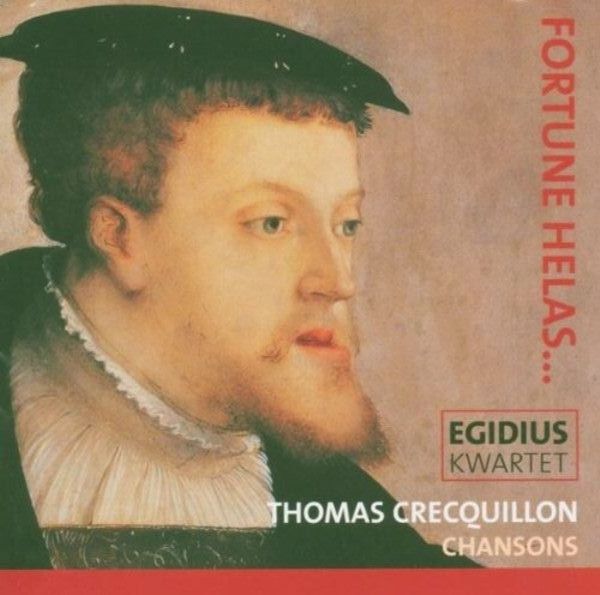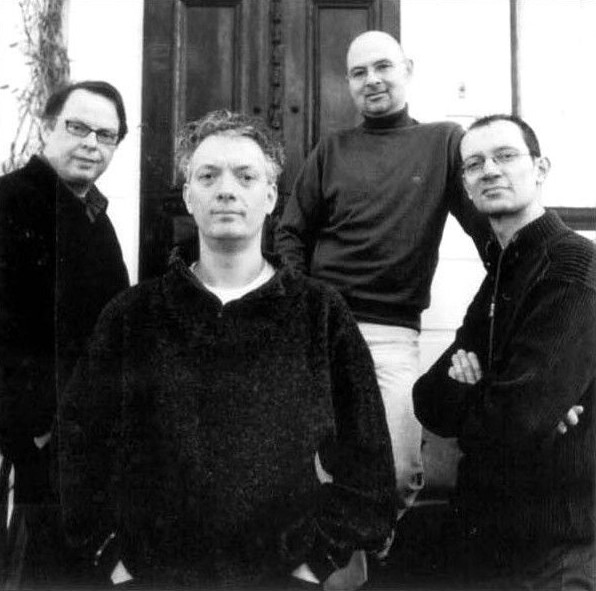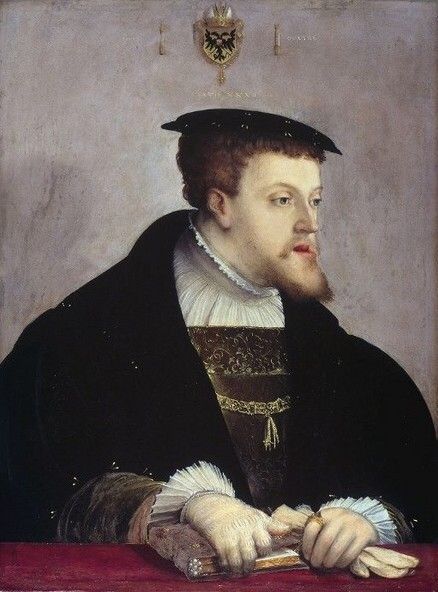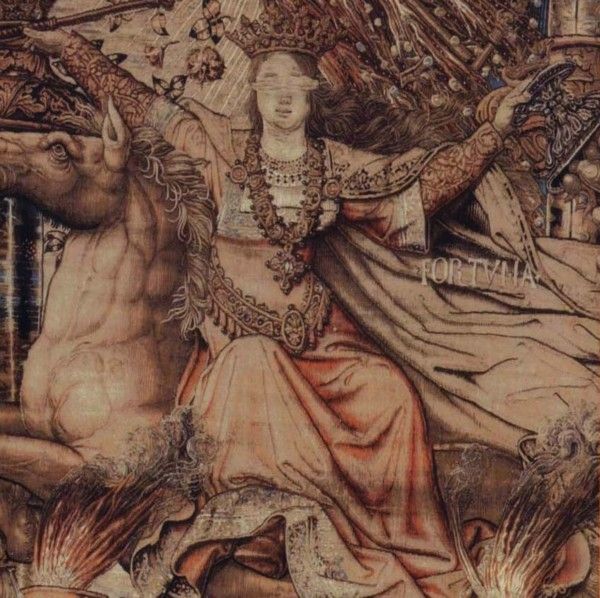
Et'cetera KTC 1274
2004
egidiuskwartet.nl

Et'cetera KTC 1274
2004
egidiuskwartet.nl
01 - Fortune, hellas, que te peult profiter [3:03]
02 - Mon povre coeur, qui sans aulcun repos [2:56]
03 - Quand me souvient & Response. Ung triste cueur [5:14]
04 - Or sus a cop, qu'on se resveille! [2:15]
05 - [5:25]
L'ardant amour
Response. Taire et souffrir
06 - Prestés moy l'ung de ces yeulx bien apris [2:55]
07 - Amour et moy avons faict accointance [1:40]
08 - Si pour amans la lune est importune [1:15]
09 - [3:01]
Pour ung plaisir
Response (SUSATO). Si de present peine j'endure
10 - [3:31]
D'ung seul regard
Response. Cerchant plaisir
11 - Pour une , helas, j'endure [4:21]
12 - [4:45]
Plus je ne sçay que dire
Response 1. La mort bien je desire
13 - Puisque malheur me tient sy grand rigeur [2:45]
14 - Response 2. La mort bien je desire [2:31]
15 - Mi levay pour ung matin [1:07]
16 - Alix avoit aux dents la male rage [1:35]
17 - Ung gay bergier prioit une bergiere [1:35]
18 - Prenez pitié du grand mal que j'endure [1:51]
19 - Puis que j'ay mis tout mon entendement [2:29]
20 - A vous en est de ne pouvoir guarrir [2:31]
21 - Petite fleur coincte et jolye [1:37]
22 - Resveillés vous, tous amoreulx [1:23]

Egidius Kwartet
Peter de Groot, altus
Marco van de Klundert, tenor
Hans Wijers, baritone
Donald Bentvelsen, bass
with
Maria Luz Alvarez, soprano
Egidius Consort
Saskia Coolen, recorder and viol (# 3-response, 4, 5, 8, 12,
13, 16, 18, 22)
Erik Beijer, viol (# 3, 5, 8, 9,12, 13,16,18, 22)
Johannes Boer, viol (# 3, 5, 8, 9, 12, 13, 16, 18, 22)
Susanne Braumann, discantviol (# 3-response, 22)
Antoinette Lohmann, discantviol (#9, 12-response)
producer: Ivar Munk
sound engineer: Tom Dunnebier, Audiolab
production: Paul Janse
recording & production:
may-september 2004
Laurentius church Mijnsheerenland

THOMAS CRECQUILLON
CHARLES V's
CHAPELMASTER AND COMPOSER
Laura Youens (For Barton Hudson)
In Orlando furioso, Ludovico Ariosto (1474-1533) envisioned the
reign of Charles V as uniting formerly divided houses:
A prince of Austrian and Spanish blood
Born on the Rhine's left bank, behold, I see:
....
For valour, whence all other virtues stem,
God wills not only that this Emperor
Shall wear upon his brow the diadem
Which Roman Emperors have worn before,
But, glittering with many a new gem
His sceptre shall encompass many a shore
Which knows no season but the winter's cold;
And there shall be one shepherd and one fold.
Born in 1500, Charles was crowned Holy Roman Emperor in 1520. His
empire was so vast that despite his constant travelling, he seldom
stayed in any one area very long and had members of his family stand in
his stead in the Burgundian lands, Spain, and the Austrian Habsburg
possessions. Habsburg marriages had always been made for dynastic
reasons: although Charles would confide to his brother Ferdinand that
he had married Isabella of Portugal as a means of keeping
Spanish-speaking lands more firmly in Habsburg control, he came to love
her. When she died suddenly in May, 1539, he issued a dry and formulaic
statement of loss, but in family letters expressed enormous anguish.
Her loss would have been fresh either shortly before or after Thomas
Crecquillon (ca.1505-15-ca. 1557) joined the imperial music
establishment and might explain why his chansons tend towards the
melancholy. For one whose extant works comprise just under 220
chansons, approximately 120 motets, and 13 masses, Thomas Crecquillon
remains a shadowy figure. His birthdate and place of birth are unknown,
although some of his compositions can be linked to the French court or
are demonstrably parodies of French works. He might have been active in
Regensburg, Tournai and Antwerp before being named Charles's maistre
de la chapelle some time after August of 1538. After the chapel was
reorganized in 1545, Crecquillon appears to have given up the position,
but to have remained as singer, chaplain, and court composer. His
health might have been poor, and he might not have been able to sustain
the rigors of travel with Charles's peripatetic court. In 1555, he was
listed as a former singer and was awarded a canonicate at
Béthune. His successor there was appointed in March, 1557, and
it is guessed that Crecquillon may have died during an outbreak of the
plague.
The majority of the 203 secular poems Crecquillon set to music are
anonymous, drawn from collections of poetry such as S'Ensuyvent
plusieurs belles Chansons nouvelles, ... (1535). Only thirty-six
are attributable to a total of eleven poets. Because of conflicting
attributions, we will probably never know exactly how many secular
works Crecquillon composed (2). Most of the poems he chose belong
firmly within the courtly tradition. In several of his chansons, a
"love doctor" is called for, as in A vous en est de me pouvoir
guarrir. The poet pleads with his lover to cure him or else he will
die. Here, Crecquillon chose the third stanza of a rondeau by Jehan
Marot (1464?-1524?), altering its first line so that the poem opens
with the first hemistich (half-line) of the rondeau's refrain.
Crecquillon invariably shortened the rondeaux he set to music. He
probably found some of these shortened rondeaux in collections such as
Alain Lotrian's La Fleur de poësie françoyse (1543).
The poet addresses "doulx amour", the cause of his imminent martyrdom,
in Mon povre coeur, qui sans aulcun repos. In Prenez
pitié du grand mal que j'endure, the lover pleads for mercy,
but there is an interesting monetary twist to this quatrain in its
reference to interest paid on the past. In Puisque malheur me tient
sy grand rigeur, again the poet asks that his heart be relieved
from its suffering. Amour et moy avons faict accointance
personifies Love and Good Hope, the latter supplying the poet with the
courage to pursue the object of his affections. The poetic topos of
love entering through the eyes is called upon both in this chanson and
in Prestés moy l'ung de ces yeulx bien apris, in which
the lover hopes he can capture his beloved through the eyes, just as
she did him. This is a chanson with a French connection----the poem
appears in Chantilly, Bibliothèque du Musée Condé,
manuscript 523, containing more than 400 poems by poets favored by
Francis I and his sister Marguerite d'Angoulême. Like Amour
et moy, the text of Puis que j'ay mis tout mon entendement
is possibly the refrain of an earlier rondeau cinquain, the subsequent
stanzas of which have been lost.
The effects of moonlight upon lovers are explored in Si pour amans
la lune est importune, here performed instrumentally. The sources
of Pour une, helas, j'endure variously transmit the second word
as "ungne,"une," or "ung," leaving one unclear as to whether or not the
poet is suffering such anguish over a man or a woman. We have chosen
"une," since it is usually the male who agonizes over the lady's
cruelty. Two of Crecquillon's chansons, including Fortune, hellas,
que te peult profiter, invoke the goddess Fortuna. She is depicted
in Pieter van Aelst's tapestry sequence 'Los honores', begun in 1520 to
celebrate Charles's election as Holy Roman Emperor. These tapestries
depict a parade of virtues to inspire the newly-elected ruler to reach
the highest reward of Honor (3).
At least 38 of Crecquillon's chansons are grouped in chanson-response
pairs or chanson-response-replique trios (4). Prominent in prints of
the 1540s and 1550s, such mini-cycles were printed by Tielman Susato in
Antwerp and Pierre Phalèse in Louvain, among others. Crecquillon
clearly revelled in the musical challenges they posed. In D'ung
seul regard mort et moy ont puissance and its response Cerchant
plaisir avant ont consommer, Crecquillon took the first hemistich of
Jehan Marot's rondeaux and linked them to their third stanzas; he
changed "toy"[=toi] in the first line of the chanson to "moy" [=moi].
One wonders why, since it destroys the logic of the lover's plea in
lines 3-4: it is the one whom the lover addresses who can ameliorate
his suffering (5).
In Quand me souvient de ma triste fortune and its response Ung
triste cueur remply de fantasie, Crecquillon invokes the spirit of
Josquin. Crecquillon's musical unification of the two chansons is at
its most subtle, as there are no verbal correspondences between the two
poems and no obvious motivic quotations in the response. L'ardant
amour souvent me veult contraindre and its response Taire et
souffrir ma douleur vehemente is a rebours chanson pair,
with the concluding line of the chanson also the opening line of the
response.
The chanson-response pair Plus je ne sçay que dire and
its response La mort bien je desire can be found today only in
the first two issues of Pierre Phalèse's Septiesme livre,
dated 1562. (Twenty-seven issues of that collection dating 1560 to
c.1661 are known (6). Only in the second issue, today surviving in a
single copy, is the pair attributed to Crecquillon. Unusually, it is
the female who speaks in both parts of the set. The chanson's
concluding 4 lines are the same as those of the response (musically the
same as well, except at the final cadence of the response),
intensifying the somber mood as the lady twice attributes her impending
death to the man's "harsh departure."
Pour ung plaisir qui si peu dure was one of Crecquillon's most
popular chansons. Its response, Si de present peine j'endure,
was composed by Tielman Susato, who published it in his Premier
livre des chansons.... (1543). It is telling that all of the
manuscript sources of Pour ung plaisir and all but the first
two issues of Septiesme livre omit the response, which differs
markedly from Crecquillon's responses in its slavish dependence upon
all the motives of Pour ung plaisir. Despite the poet's
insistence upon the pain love causes, Crecquillon's chanson veers
towards the light-hearted side. Crecquillon could switch readily from a
polyphonically oriented Franco-Flemish model to a more homophonically
inclined, more rhythmically incisive style. This latter type is
particularly suited to the popular world of the chanson grivoise
(erotic chanson). The poems feature named characters, sexually explicit
language, and a light, comic touch. Crecquillon set few such texts, but
one, Ung gay bergier, is indisputably his most
widely-disseminated composition. Crecquillon set to music a poem whose
bawdiness had been considerably softened. In the literary sources, the
shepherdess is eager to have sex, only to protest that the shepherd's
lovemaking is unsatisfactory. Similarly, Alix avoit aux dens la
male rage modifies a contemporary poem in which Alice, not Martin,
is the only speaker and in frank language: in all of the text sources,
it is the "rage du cul" that overcomes the toothache. What we know of
Charles's character supports the assumption that he would not have
approved of those grivoise texts in their original states. Mi
levay pour ung matin also falls into the chanson grivoise
category with its sly references to the bagpipe drone, the stalk, and
horn.
In a select group of works, the poet has either been rewarded in his
conquest or else takes a more light-hearted approach to love. In Petite
fleur, coincte et jolye, the first quatrain of a popular poem, the
poet tells his "little flower" that she must declare herself in love
with him or risk his annoyance. Resveilles vous, tous arnoreulx
is another of these rare happy chansons. Or sus a cop takes its
place in a long line of pieces imitating birds. The addition of rossignollerie
perfectly invokes the nightingale, whose "chant gratieux" fills the
night.
Listening to these chansons, we can transport ourselves into the world
of the imperial court. As Charles ate the rich food he so enjoyed and
entertained his family and noble guests, he would have been provided with music to
complement every mood.

1. Orlando Furioso (The Frenzy of Orlando): A Romantic Epic by
Ludovico Ariosto, trans. Barbara Reynolds (London Penguin Books,
Ltd., 1973): Part I, Canto XV, 25-26.
2. 219 secular works will appear in Vols. 14-20 of Thomasii
Crecquillonis Opera omnia (Corpus mensurabilis musicae 63),
published by the American Institute of Musicology, 1998-.
3. Guy Delmarcel. Los honores: Flemish Tapestries for the Emporor
Charles V. Antwerp: SDZ/Pandora, 2000.
4. For more information, see Laura Youens, "Thomas Crecquillon and the
Chanson Cycle", Encomium musicae: Essays in Honor of Robert J. Snow
(Hillsdale. NY: Pendragon Press, 2002): 615-636.
5. Crecquillon did not set Marot's "Response de la dame". See Jehan
Marot: Les deux recueils, ed. By Defaux, Gérard and Thierry
Mantovani (Geneva: Droz 1999): 71.
6. Henri Verhulst, "Un succès de l'édition musicale : Le
Septiesme livre des chansons a quatre parties (1560-1661/3)". Revue
belge de musicologie 32-33 (1978-1979): 97-120.
